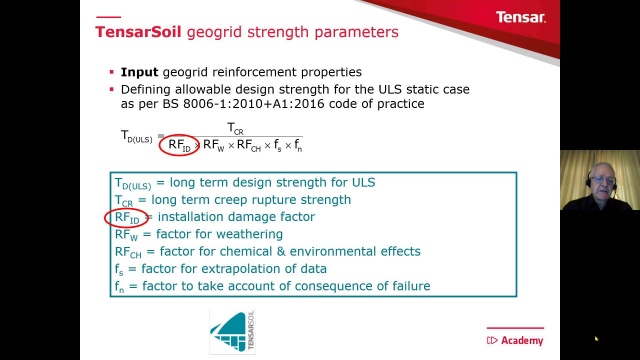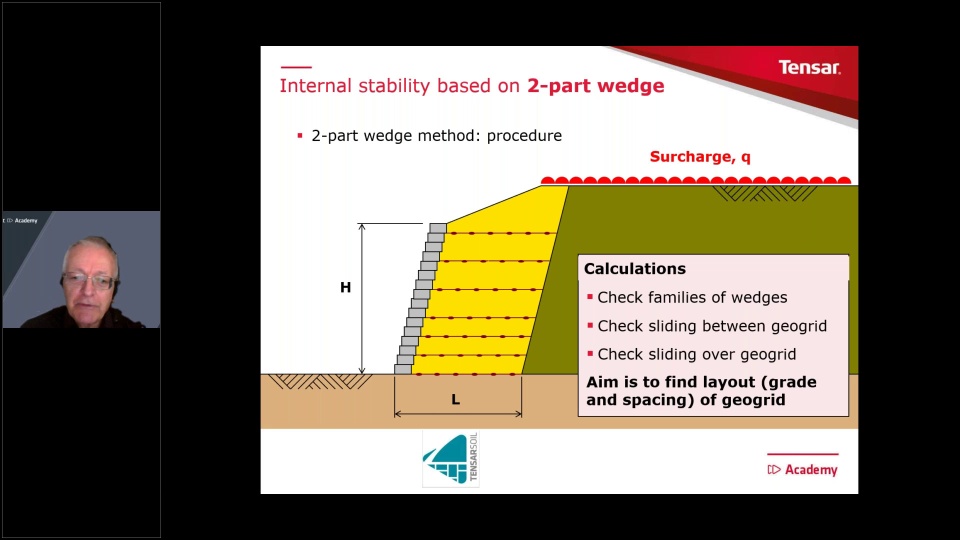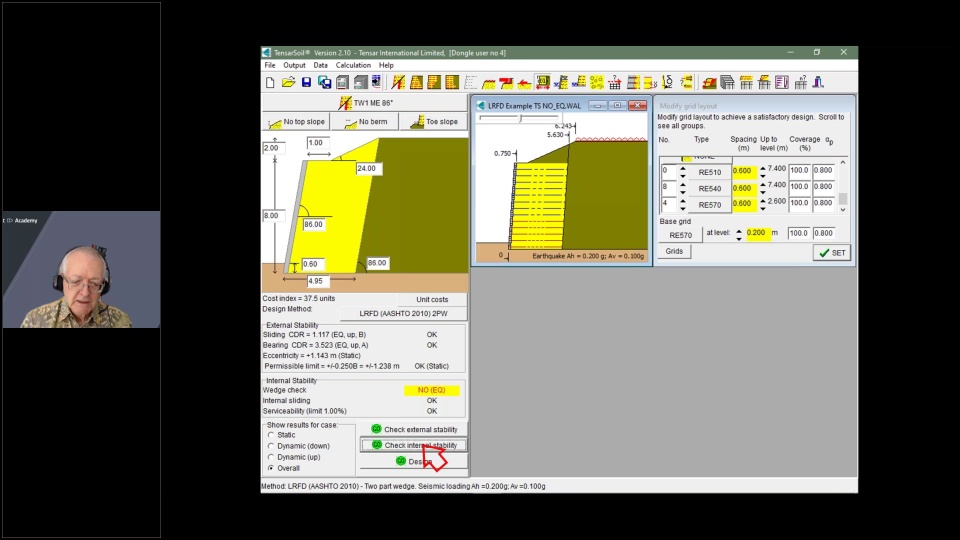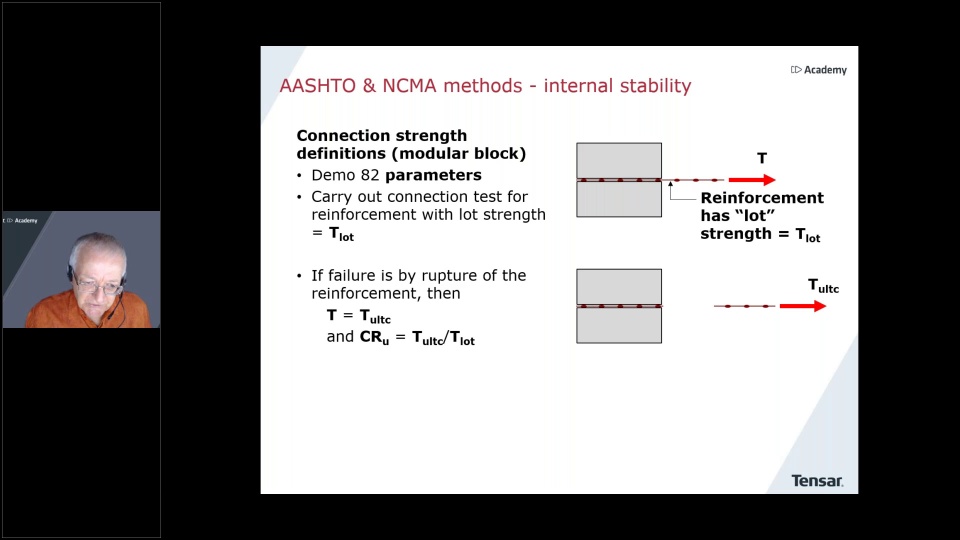

TensarSoil Software Training and User Guidance
A series of training videos taking you through various aspects of our TensarSoil software
Resources & References

The material presented in these training videos is suitable for existing users of the program TensarSoil, as well as new users, to learn in detail about the design of reinforced soil retaining walls and steep slopes.
Worked examples are available and may be downloaded, providing guidance on the use of various design methods available in TensarSoil based on a detailed step-by-step procedure that users may follow. The worked examples cover most of the options and design input available in TensarSoil.
Access is provided to view and download copies of various published papers which are relevant to the use of TensarSoil, with the main topics: material parameters, design of steep slopes, design of retaining walls for ULS, design of retaining walls for SLS, design and performance of reinforced soil structures under seismic loading.
Click the underlined titles below to download the published papers...
INTRODUCTION TO TENSARSOIL VERSION 2.10 AND THE BS 8006 TIE-BACK WEDGE METHOD

What you'll learn...
- In the first training video, it provides a full outline of all design methods available in TensarSoil, summarising their main features.
- Availability of methods is arranged based on location by giving access to design methods according to region.
- Following the introduction, a detailed description is given of the tie-back wedge method for the design of reinforced soil retaining walls as described in the British Standard Code of Practice for strengthened/reinforced soils and other fills, BS 8006.
TENSARSOIL - INPUT PARAMETERS

What you'll learn...
- In the second Tensar training video, you will look in detail at the input parameters which are applicable to all the design methods in the TensarSoil program.
- This covers facing details, soil parameters, reinforcement properties, the interaction between fill and reinforcement as well as connection strength between reinforcement and facing.
TENSARSOIL - DESIGN OF REINFORCED SOIL SLOPES

What you'll learn...
- In the third TensarSoil training video, you will learn about a method for designing reinforced soil steep slopes, using a two-part wedge technique based on the UK Highways Agency Advice Note HA68/94.
- This method of calculation has been developed further to take account of seismic loading and various definitions of partial material and load factors.
- You will learn how to use the method in TensarSoil, by reviewing the required input parameters, the method of calculation, and the design results.
TENSARSOIL - REINFORCED SOIL RETAINING WALLS (INTERNAL STABILITY BASED ON A 2-PART WEDGE METHOD OF CALCULATION)

What you'll learn...
- In the fourth training video, you will learn about the background and advantages of the 2-part wedge method of calculation which is used for the internal stability check in a number of the retaining wall design methods in TensarSoil.
- This approach has significant benefits when taking into account design features such as facing connection strength and earthquake loading.
- The operation of this technique in TensarSoil is described in detail, based on the Institut fur Bautechnik method, followed by a brief outline of the other methods which use this approach, such as AS4678, Eurocode and AASHTO/LRFD.
TENSARSOIL - DESIGNING FOR EARTHQUAKE LOADING AND THE SERVICEABILITY LIMIT STATE CHECK

What you'll learn...
- In the fifth training video, you will learn about the background and details of two important design checks which are used in most of the design methods in TensarSoil.
- Firstly, we look at the situation where earthquake activity might affect a structure and the design must take into account additional loads from seismic shaking.
- Secondly, we shall look at the serviceability limit state check, in which the post-construction strain in the reinforcement is assessed in order to limit ongoing deformation during the service life of the structure.
TENSARSOIL - US TIE-BACK WEDGE DESIGN METHODS

What you'll learn...
- In the sixth training video, we look at four methods included in TensarSoil which are based on United States practice.
- These methods all use the tie-back wedge procedure for internal stability calculations and operate in a similar way. The methods are AASHTO/LFRD, FHWA NHI-00-043, Demo 82 and NCMA.
- However there are some important differences, which will be explained during this training session. In particular, AASHTO/LFRD is a limit state method, whereas the other three all use traditional lumped safety factors.
Speaker






